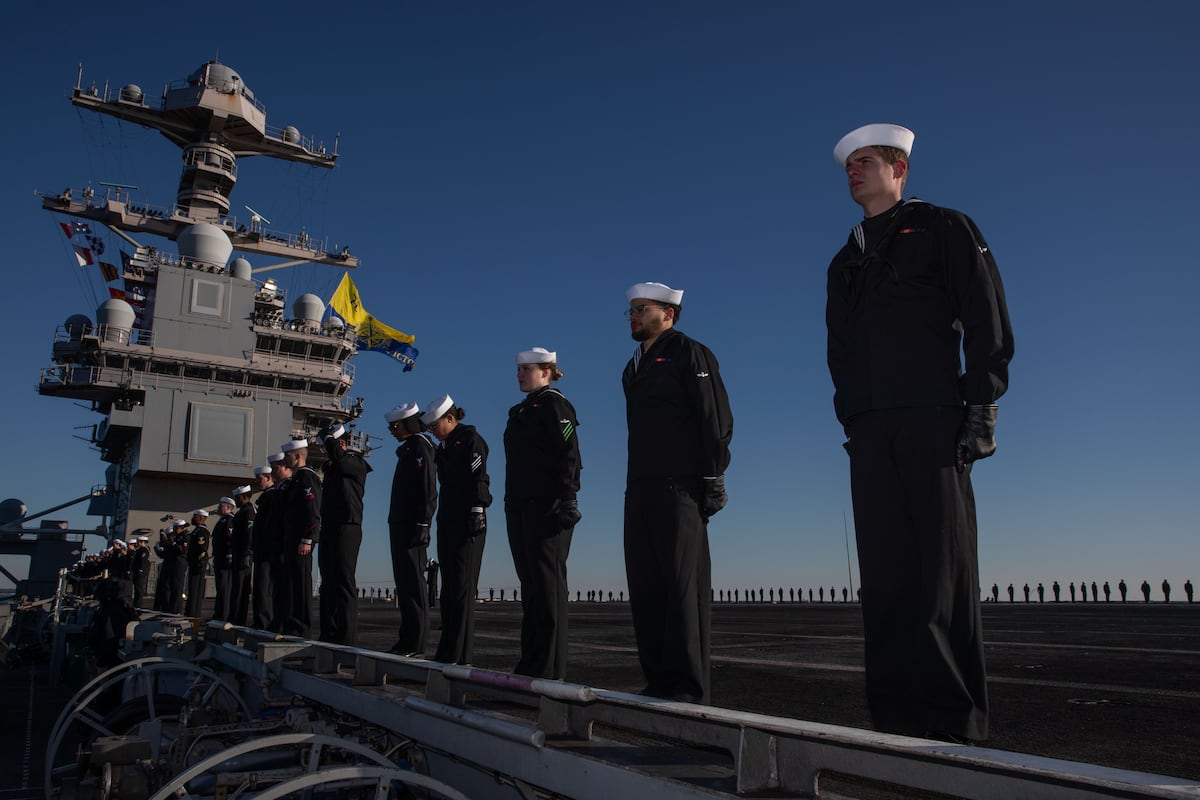New program gives nondeployable sailors more opportunities to serve

A recently announced Navy initiative will help expand work opportunities for sailors unable to deploy by placing them in shore billets that suit their unique expertise, according to a service administrative fact sheet released Monday.
The EMPLOY program will place sailors who are dealing with injury or serious illness into positions that match their rank, and which would otherwise be gapped, a Navy spokesperson told Military Times.
“EMPLOY helps retain Sailors who desire to continue to serve, and also preserves valuable knowledge, skills, and experience needed to meet our warfighting mission,” the NAVADMIN said.
EMPLOY was also created to reduce the administrative burden on the Disability Evaluation System, which determines whether a service member is eligible to return to duty, medically separate or medically retire due to a disability.
A collaboration between Navy Personnel Command and the Navy Bureau of Medicine and Surgery, the voluntary program is open to active duty sailors and sailors in the Navy’s Training and Administration of the Reserve program who are “clinically stable and able to complete tasks associated with their rank/rate in a non-operational environment,” according to the Navy.
“This is about meeting the mission while also taking care of our people,” said Lt. Cmdr. Stuart Phillips, public affairs officer for Navy Personnel Command.
RELATED
The program could apply, hypothetically, to a nondeployable sailor recovering from a musculoskeletal injury or one under observation after surviving cancer, Stuart said.
Sailors will serve on EMPLOY tours for a minimum of 24 months and will be reevaluated during that time — no later than 15 months before their projected rotation date — for eligibility to return to full duty, another EMPLOY tour, referral to the disability system or separation from the service.
Sailors assigned to career fields that require special duty screenings will need to complete the screening or de-screening process before being considered for EMPLOY.
The EMPLOY process begins with military medical providers nominating a sailor for the program. The nomination will be considered for approval by a Medical Evaluation Board and convening authority.
After, the sailor’s command will fill out a candidate assessment form to evaluate the sailor. The Deployability Assessment and Assignment Branch (PERS-454) will then review the sailor’s medical evaluation and candidate assessment form to determine EMPLOY eligibility.
Detailers will work with sailors to negotiate their orders, or, if eligible, sailors may participate in the Senior Enlisted Marketplace, according to the admin message.
EMPLOY sailors may be stationed at any Type 1 or Type 6 duty station. Type 1 duty stations include shore duty assignments in the U.S., including Hawaii and Anchorage, Alaska, where sailors aren’t required to be away from their duty station more than 150 days per year or attend schooling for 18 months or more, according to the Navy. Type 6 duty stations include overseas shore duty assignments where sailors aren’t required to be away from their duty station more than 150 days per year.
Sailors approved for the program will have the opportunity to apply for cross-rating or redesignation if the new job requires it. Sailors without enough time left in their enlistment contract to complete an EMPLOY tour may also receive a conditional reenlistment contract.
Phillips told Navy Times that the first iteration of the EMPLOY model was introduced during a phased roll-out last year, with the first sailor gaining approval for the program in May 2024.
So far, 850 sailors have been considered for EMPLOY, which has retained 303 sailors. Twenty sailors are nominated for EMPLOY each week, Phillips said.
Riley Ceder is a reporter at Military Times, where he covers breaking news, criminal justice, investigations, and cyber. He previously worked as an investigative practicum student at The Washington Post, where he contributed to the Abused by the Badge investigation.
Read the full article here









